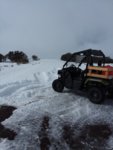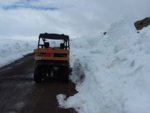Idahomnts
Lil-Rokslider
- Joined
- Jan 6, 2016
- Messages
- 241
Just got back from a few days in 72 eastern Idaho, a short hike around my brothers house turned up 15 dead fawns in about 5 miles, and a few that weren’t too excited about fleeing the scene when I stumbled across them, south slopes opening up and green starting but this rain and cooler temps aren’t helping, 2’ + on the floor and north sides , the fawns are taking a whoopin for sure ,


